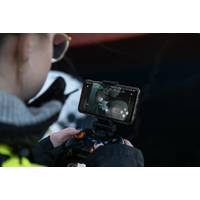
Too Much Information
in the Blueye app, press the start button and then let the ROV take over.These developments are part of the evolution of subsea technology, and in her latest Deep Dive podcast, Rhonda Moniz talks to industry veteran Vince Capone about the role it has played in his own career. Capone was inspired by Jacques Cousteau as a second grader, developed a love of scuba diving as an undergraduate and went on to a career in subsea technology – primarily sonar.There was a moment when he realized that he could see more of the ocean bottom in a day of side scan sonar operations than he could in three months of
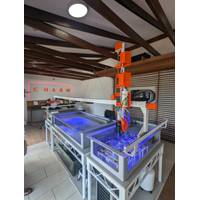
Lending Oceans a Robotic Hand
Systems Research Institute (ESRI), about the role that mapping plays in maintaining a balance between human activities and protected areas.Growing up in Hawaii, she was drawn into the marine research work by her close association with the ocean as well as by her childhood fascination with Jacques Cousteau and American astronauts.Today, her focus is on understanding and managing the marine environment. 90% of the ocean is over 200 meters deep, and only 0.001% has been visually observed. “We think that we know this planet, we don’t – not in the way that we need to,” says
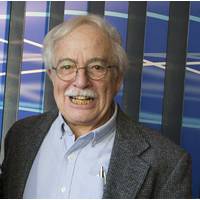
MTS, SUT to Honor Marty Klein with Capt. Don Walsh Award for Ocean Exploration
left an indelible mark on the marine technology community. MTS is proud to recognize Marty’s legacy of growing the next generation of ocean explorers.” Marty has been involved in Ocean Exploration since 1961, when MIT Professor Harold “Doc” Edgerton introduced him to Jacques Cousteau, George Bass, Peter Throckmorton, Ed Link and many pioneers in the field. When Marty introduced his side scan sonar systems in 1967, there were no commercial units on the market. He helped to create an industry – there are now over 30 manufacturers of these systems, which have truly helped
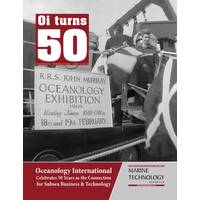
Oi: Tracking 50 Years of Ocean Innovation
currency included shillings and ha’ pennies and man had yet to step foot on the moon.More crucially, to the emergent underwater oceanographic and hydronautical world, the excitement that had been building over the past decade about what exploration of the deep could offer, through the likes of Jacques Cousteau, was starting to be applied in a new industry, North Sea oil and gas exploration. The possibilities of new industries such as deepsea mining and seafloor habitation were also being discussed.Mid-century saw the first gas discovery in the North Sea, followed, a year later, in 1966, by the founding
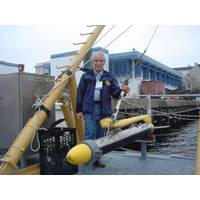
Klein's Side Scan Sonar, Then and Now
and I think I was hooked right from the beginning. What kind of projects was [Edgerton] working on at the time? MK: Edgerton was famous for the development of strobe light – he’s known as “Papa Flash” – but back in the late ’50s he was introduced to Jacques Cousteau by the National Geographic Society. Cousteau wanted to take pictures in the deepest part of the ocean. Edgerton wound up making him a deepwater camera and strobe light, and together they took the first pictures in the deep ocean. Edgerton’s device used a precision timed pinger that helped
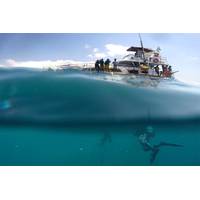
Marine Archaeology Center Launched
past for a better future.” The Scripps Center for Marine Archaeology was co-founded by Scripps geophysicist Walter Munk and former Institute of Geophysics and Planetary Physics Green Fellow Damien Leloup, who began his career aboard research vessels Calypso and Alcyone working with Jacques Cousteau. Munk and Leloup raised over $400,000 in seed donations and secured approval to form the center in September 2015. Following the groundwork laid out by Munk and Leloup, Scripps oceanographer John Hildebrand and Division of Social Sciences anthropologist Thomas Levy will be the first
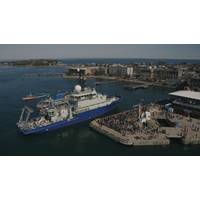
RV Neil Armstrong Arrives in Woods Hole
test some of the vessel’s research capabilities. Amidst the sounds of ships’ whistles, fireworks, canon shots, and cheers from the assembled crowd, members of Armstrong’s crew tossed lines to those standing by on shore, ready to secure the ship to the pier. “It was Jacques Cousteau who used to say, ‘You need to get wet to understand the ocean,’” said David Scully, chairman of the WHOI Board of Trustees. “Well, WHOI was founded on the belief that you need to go to sea. Today, we are as strongly committed to this ideal as ever, and there is no finer
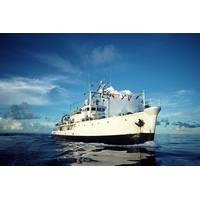
Jacques Cousteau’s Calypso Shipped for Renovation
Jacques Cousteau’s ship Calypso, star of the “Undersea World of Jacques Cousteau”, was loaded on March 14 in Concarneau, France for shipment to Turkey, where the legendary oceanographic vessel will undergo renovations. From 1951, Calypso sailed the world undertaking scientific explorations until January 8, 1996, when she was involved in a mooring accident and sank. Now raised and once renovated, the Calypso will remain at the service of science and education, as Jacques Cousteau wished. In order for the latest round of renovations to be performed, a team of specialist
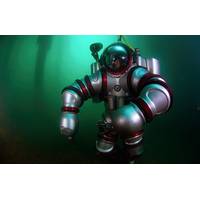
High-tech Dives on an Ancient Wreck
. The pièce de résistance was the unique and mysterious Antikythera Mechanism, a complex clockworks device, often called the first known computer, whose gears encoded the movements of the five planets known at the time, phases of the moon, and eclipses. More than 70 years later, Jacques Cousteau returned to the wreck. His team found hundreds more artifacts, as well as the remains of four people, including a woman. But the Cousteau expedition merely unraveled the mystery a little further. They apparently explored only the galley and stern passenger compartment, leaving the main compartment


 February 2025
February 2025





